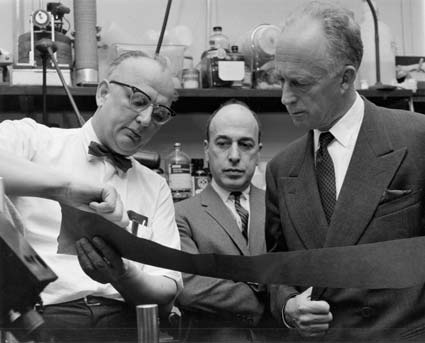...
| Div | ||||||||||
|---|---|---|---|---|---|---|---|---|---|---|
| ||||||||||
|
Robert L. Bowman (1916-1995)
| Div | ||||||||||
|---|---|---|---|---|---|---|---|---|---|---|
| ||||||||||
|
During his career at NHI, Dr. Bowman worked with other scientists to develop instruments that would help them do their research. Trained as a doctor and possessing a special knack for instrument manufacture, Dr. Bowman had an unusual mixture of talents and was honored with many awards including the 1967 American Chemical Society award in chemical instrumentation.
...



